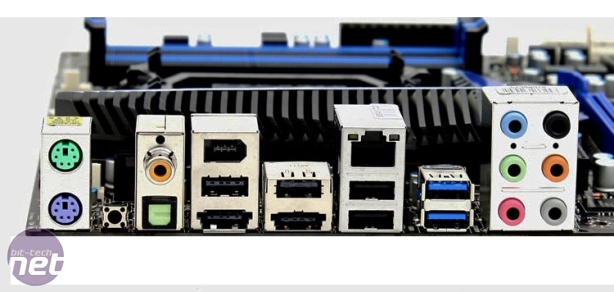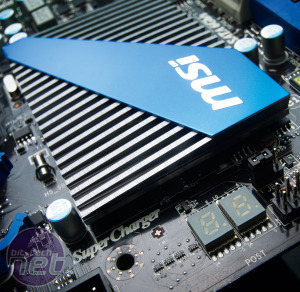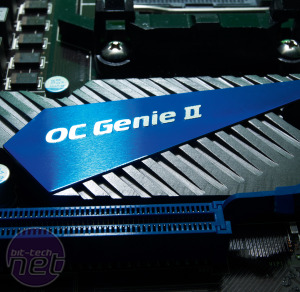Performance Analysis
At stock speeds, the GD80 was fairly inconsistent. It recorded some of the slowest results in the Gimp image editing and HandBrake H.264 video encoding tests, but its score of 1,061 in the multi-tasking test was second only to the Sabertooth 990FX, both of which were noticeably faster than the rest of the competition. This was unable to bring its score back in line, however, and the GD80’s overall score was the slowest on test, though only by two points.Its minimum frame rate in Arma II of 61fps was third only to the Asus motherboards, which shared the gaming honours. Despite sporting the same SB950 Southbridge as the two Asus motherboards, the GD80’s SATA performance was way off the pace, managing read and write speeds of just 288MB/sec and 326MB/sec respectively. We can only assume that Asus has been working hard behind the scenes with the new chipsets, as all other manufacturers’ boards are significantly slower.
Click to enlarge
The GD80, unlike Gigabyte’s 990FXA-UD7, is equipped with an EFI, which is far more capable and flexible than any of the other overclocking features it sports, such as MSI’s Control Center software. Unfortunately, like all the other boards on test, the GD80 struggled to recover from failed overclocks, even those that were just a smidgen too much. Recovering the board from failed overclocks wasn’t a terrible experience either, although there's plenty of room for improvement.
Sadly, we couldn’t push the GD80 beyond a maximum HTT of 250MHz. The voltages were quite limited in places too, with only 1.3V on offer for the NB. Even maxing this out, and pushing other voltages well over 1.3V, failed to yield results. The HTT overclock was considerably poorer than the second lowest 320MHz maximum HTT from the UD7.
Click to enlarge
However, we were able to use most of this HTT when overclocking the CPU, and managed a CPU multiplier of 17x for an overall overclock of 4.2GHz (with an HTT of 247MHz). This was the highest overall overclock of all the boards on test. We achieved the overclock using a CPU voltage of 1.5V, along with a 1.3V NB, 1.321V SB, 1.348 CPU NB and a 1.335V HT Link. This saw the overall benchmark score leapfrog to 1,581 but this was still the second slowest on test. The overclocked GD80 managed a minimum frame rate of 67fps in Arma II, though, the third fastest result.
Conclusion
The 990FXA-GD80 was limited in the overclocking department but compensated with a high CPU frequency. The resulting speed wasn’t amazing compared with the competition, but it was enough to secure a solid position. The most disappointing aspect of the GD80 was its SATA performance though – it recorded the slowest read and write speeds on test from the SB950 Southbridge.
This can’t be overlooked if you have a SATA 6Gbps SSD that can take advantage of the speeds that the Sabertooth and Crosshair V have to offer. With average overall speed results and a questionable EFI, we’d definitely spend another £5 on the Sabertooth 990FX instead.
-
Value18 / 25
-
Features21 / 30
-
Speed36 / 45


MSI MPG Velox 100R Chassis Review
October 14 2021 | 15:04












Want to comment? Please log in.